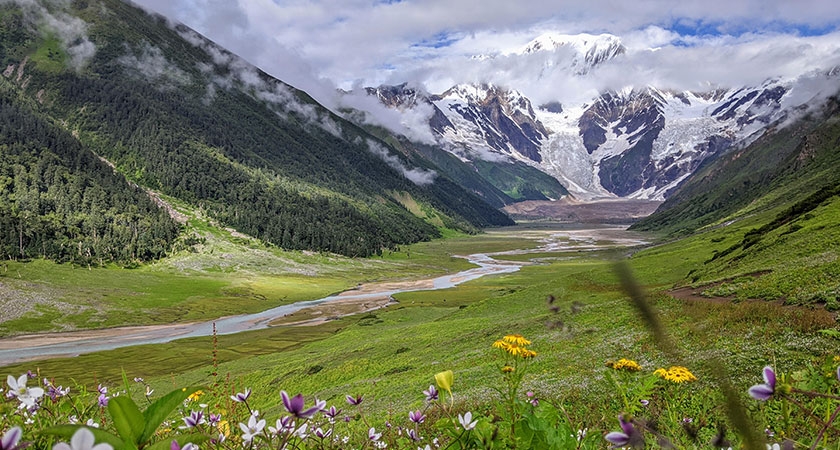
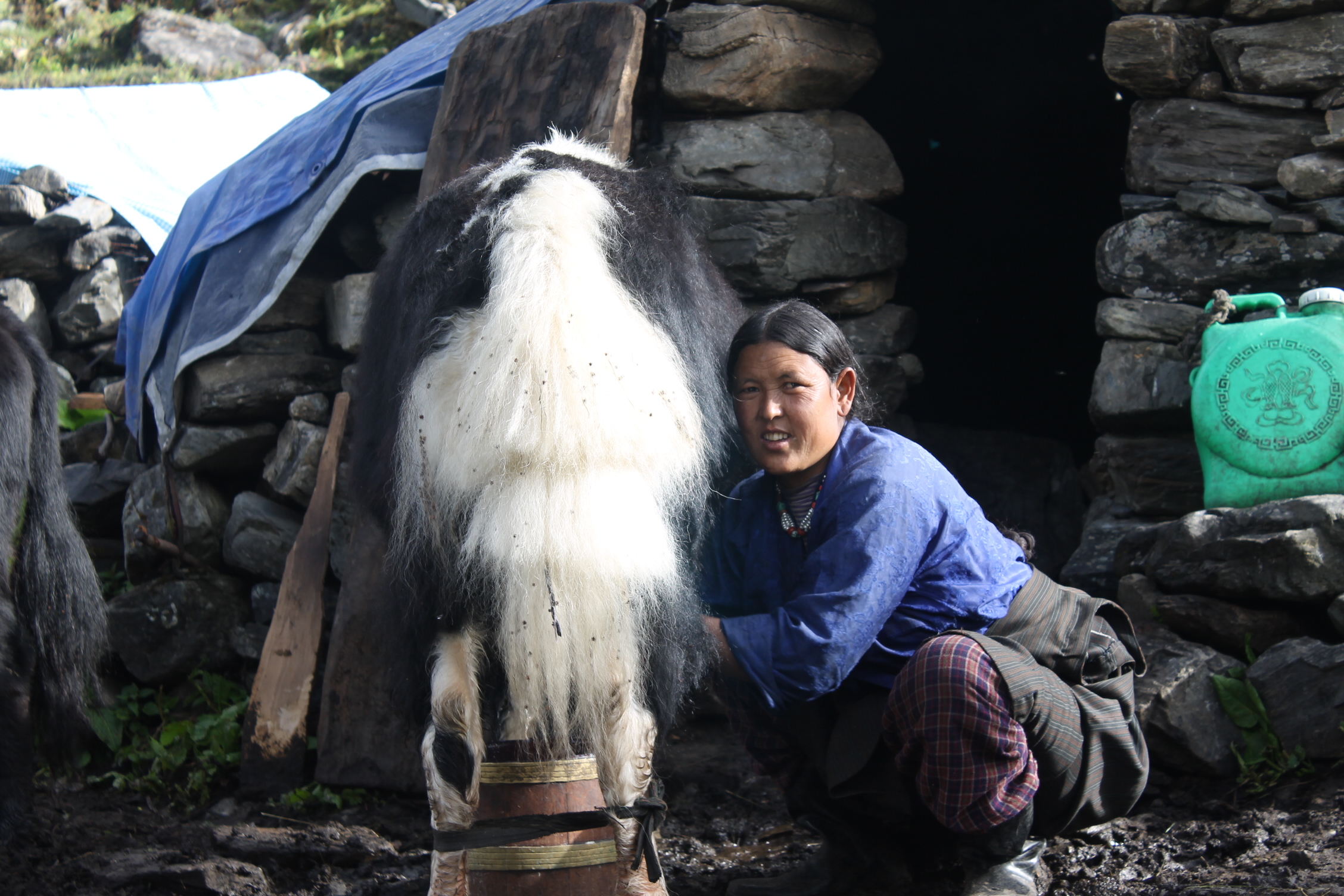
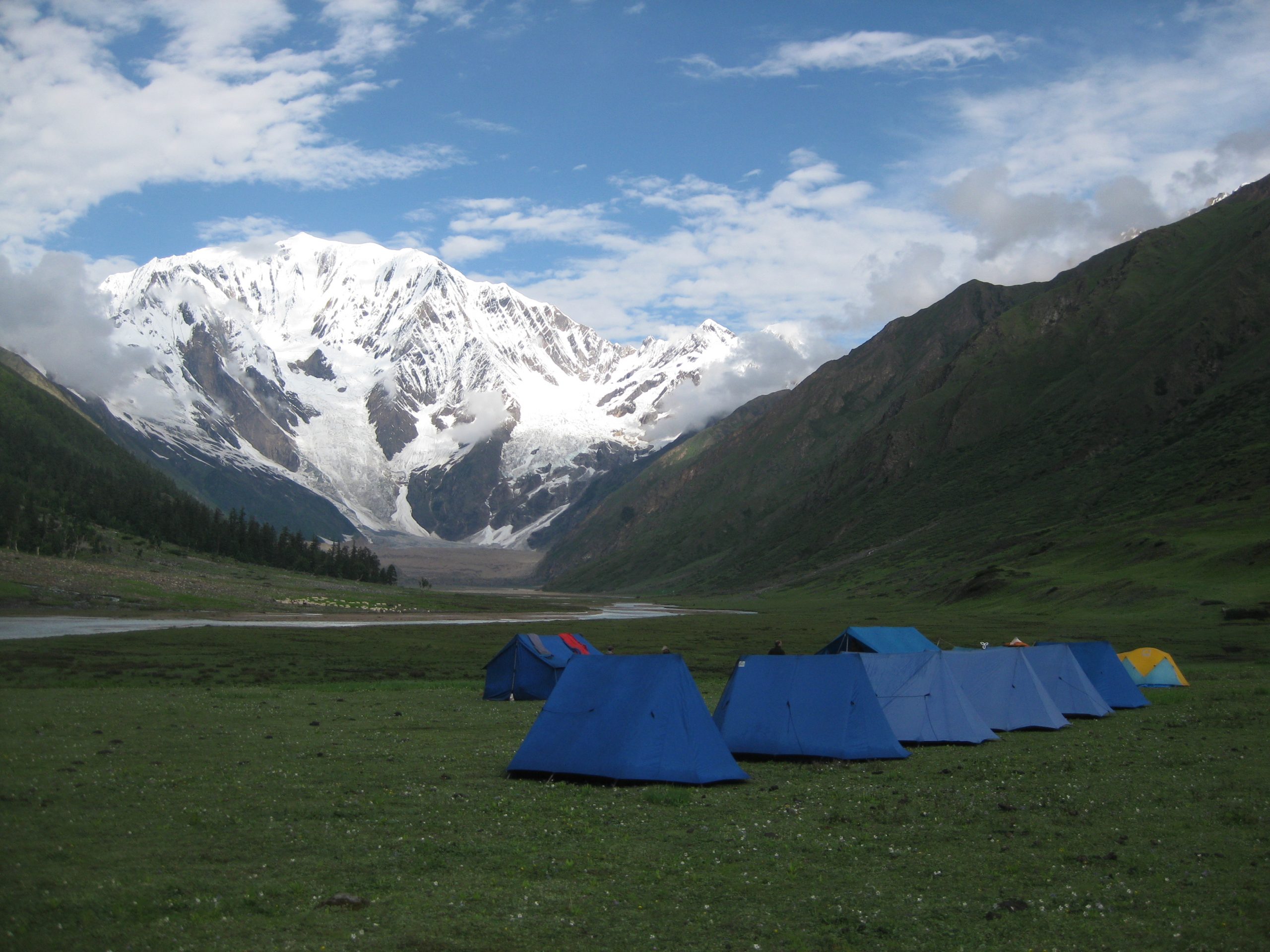
Saipal Base Camp Trek Humla
Wildest, most remote and least trekked part of Nepal- Trip Style: pk8
- Ways to Travel: Guided Group
- Activities: Trekking
- Group Size: 4 - 16
- High Altitude 5000 M

Trip Overview
We have a new products to offer Post Covid 2019
With an impressive 7031 m, Mount Saipal is the second highest peak of the Far Western Himalayas.
Saipal is a spectacular peak when viewed from the east or north. East Saipal and North Saipal Base camp can be accessed from Simikot as a separate trip or as an add-on to the Limi Valley circuit. The route to the East Base camp heads south from Simikot and makes a detour through steep-sided forested country.
Culturally as well as geographically isolated from the rest of the country, the region’s broad, rolling lekhs (pass) are forested with ancient blue pines, spruces and enormous cedars, and the village nestling among them are populated by Chhetris, Brahmin, Thakuris and Bhotias. There is a degree of cultural and economic interaction between Hindu and Buddhist unparalleled else-where in the Himalaya.
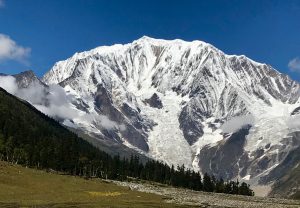
Trip Highlights
Humla is one of the most culturally fascinating places in all of Nepal
It is fantastically beautiful place. Saipal peaks in every bit is as stunning as their famous eight-thousand meter neighbors
Encounter a wide range of landscapes and Buddhist and Hindu Cultures
Wildest, most remote and least trekked part of Nepal
Simikot- Gate way to Tibet
Detailed Itinerary
-
Day 1 Welcome to Boudha- Kathmandu [1.300 m] Pema Boutique Hotel
Upon your arrival at Kathmandu, our representative of responsible treks will pick you up from airport and transfer you to your hotel. Upon checking in hotel we shall brief you more about your daily activities for next few days.
Kathmandu, being a historical and cultural heart of Nepal, is a popular destination for tourists, trekkers and adventure seekers. The city presents a wonderful mixture of Hinduism, Tibetan Buddhism and Western influence in the Valley. The ancient cities Kathmandu, Patan and Bhaktapur are the major attractions, with their evocative city squares and represent an epitome of harmony in urban design, elegant architecture and refined culture.
Today you will be staying at Boudha , Peaceful clean part of Kathmandu . In evening we can walk around Boudha Stupa
Boudhanath
The Buddhists shrine of Boudhanath is one of the largest Stupa in the world, one of the holiest Buddhist pilgrimage and tourist destination in Kathmandu. It stands with four pairs of eyes in the four cardinal directions keeping watch for righteous behavior and human prosperity. Boudhanath is part of the shared history of Nepal and Tibet, with Tibet having held ruling privileges over the site until the last century. It is built on an octagonal base inset with prayer wheels. At prsent many private houses, , monasteries and shops are build around the stupa. Lamas, Nuns and Buddhist as well as the other people make Kora (circulatio around stupa). The area of Boudhanath is also famous for over 50 Tibetan Gompas or monasteries.
-
Day 2 Kathmandu Cultural Tour: Swayambhunath, Pashupatinath, and Patan Durbar Square Pema Boutiqe Hotel
After breakfast at your hotel, you’ll be picked up by an English-speaking guide for a full-day tour of the Kathmandu Valley, visiting three sacred sites: Swayambhunath, Pashupatinath, and Patan Durbar Square.
This day fits quite a bit in—helpful for maximizing your time in Kathmandu—but doesn’t overload you with too many sites. You can spend as much time as you like at each temple (this is a private tour just for you), although most people tend to spend an hour. For lunch, you’ll stop at one of our recommended local restaurants.
Swayambhunath Stupa
A few miles from the city center on a scenic hill, this is the best place to observe religious harmony between the Nepalese Buddhists and Hindus, as well as the Kathmandu Valley below. The stupa—a dome-shaped Buddhist structure—is one of the most historic shrines in this part of the world. Along with prayer wheels and fine paintings displayed in the monasteries, Swayambhunath also boasts the largest Buddha statue in the country.Pashupatinath Temple Complex
Located on the bank of the Bagmati river, this is the site of Nepal’s holiest Hindu pilgrimage and has received worshippers for at least 1,500 years. A circuit of the Pashupati area takes visitors past a sixth-century statue of Buddha and an eighth-century statue of Brahma, the Creator. Wander past skeletal images guarding temple gates and other magnificent temples dedicated to various deities in the complex.Patan Durbar Square
This beautiful archaeological site and monastery holds 14th-century statues and ancient scriptures. While here, you will visit the Krishna Mandir, Bhimsen Temple, Mahaboudha Temple in Terracotta, and Oku Bahal.Return to your hotel in Kathmandu in the late afternoon and meet your trekking guide who will go over details for tomorrow’s adventure.
Tour length: 7-8 hours (including transfers)
-
Day Kathmandu - Nepalgunj ~ Flight
Saipal is a spectacular peak when viewed from the east or north. East Saipal and North Saipal Base camp can be accessed from Simikot as a separate trip or as an add-on to the Limi Valley circuit. The route to the East Base camp heads south from Simikot and makes a detour through steep-sided forested country.
-
Day 3 Flight to Nepalgunj (150m) [ 55 minutes] Hotel
We will board a plane on the 3rd day. We will fly to Nepalgunj from Kathmandu (55 minutes). After a tiring day, you can spend the evening in your hotel or explore this vibrant city. It is a Sub-Metropolitan City in Banke District, Nepal. It lies on the Terai plains near the southern border with Bahraich district in Uttar Pradesh, India. It is the major transport hub famous for exciting treks to Simikot (gate way to Mt Kailash and Mansarowaor lake), Dolpo plateau, Rara and Jumla region. The climate of Nepalgunj is hot and humid with the annual average tempreture of 27.4 degree centigrate and the average rainfall of 1175 mm.
-
Day 5 Fly to Simikot [2910m] [ 45 minutes] ; After Lunch Trek to Bargaun Village 2885m [ 2-3 hours ] Home Stay
Today after breakfast, we take the first flight to Simikot. This is about 45 minutes flight towards the north across the plains, passing through the Siwalik Range and town of Surkhet will take you to Simikot. With luck there will be views of East Dhaulagiri and Churen Himal. The best approach is a thrill.
Simikot is the Headquarter of Humla District; there are Commercial Banks, Government and Non-government offices and schools. People here practice both Buddhism and Hinduism. The climate here is mild, and generally warm and temperate. The summers here have a good deal of rainfall, while the winters have snow. The average annual temperature is 10.1 °C in Simikot, with the average annual rainfall of 783 mm.
After an early lunch, slowly head towards the Nyinba Valley. After about 1.5 hours of gradual climbing, reach some prayer flags and a small school. This place is called Limbuk (10,587 ft. / 3,227 m.). Then, descend down towards Nyinba village for another 1 hour.
Bargaun (10,842 ft. / 3,000 m.) is a Tibetan Buddhist village, surrounded by fields of barley and millet. There are a few homestays here. Staying in a homestay provides a wonderful opportunity to openly and authentically engage with the local people and to learn about local life.
-
Day 6 Trek from Bargaun to Yangchu Kuna [2410m.] 5-6 hrs
After the wonderful home stay experience in Bargaun. The trail heads out downhill towards Karnali River. We follow the old Sheep caravan trail in Karnali valley route to Lali. It will take us on a sacred loop through some of the remotest areas of Humla Karnali.
we decent our way through steep sided Valleys. The shrine at Karpunath is one of the highlight for the day. Yangchu is the one of the main village of Khapunath Gaupalika, situated on the bank of Karnali river at the foot of Bigauda Danda range. Majority of Thakuris with few Dalits (untouchable) population following Hindu religion.
-
Day 7 Trek from Yangchukuna to Ripgard [ 1950m] [5-6 hours]. Full Service Camping
Night with roaring river, cup of hot beverage will refresh you. After Brake fast trek will start along the Humla Karnali River Valley to the south, through forest of Alnus, oaks, walnuts, Himalayan bamboo, Pines and juniper, Bokche Gauda is the next place of any note with a tea house supposedly on offer. we continue to south the trail keeps close to the river around the Bluff of Lali where lunch is serve. After taking undulating trail until Biubare trek goes in open sky with big pine trees. Trek for the day halts in Ripgard.
-
Day 8 Trek from Ripgad to Kheta Khola [ 3000m, 6-7 Hours]. Full Service Camping
The trail is tougher today as it turns west, it winds around the valleys again in pristine forest. The few settlements are small and little visited by outsiders to date. We will leave the Humla Karnali where the river dives off to the southeast. Now following the small river towards Kheta Khola Valley , the route reaches Ogaliya. Continuing around the spurs , the trail reaches Bhuagdiya where we are likely to camp wherever there is flat space around along the Khet khola.
-
Day 9 Trek from Khetkhola to Lampate via Dhid Lagna and Odar Gad [ 5-6 hours]. Full Service Camping
It is another rugged day in the pine forest, broken by a glimpse of the treasures ahead. The means the Dhid Lagna Pass for the time being, as the death of the valleys tends to hide any views of the peaks The trails climbs steeply from the Khet Khola to the Dhid Lagna Pass ( estimate 3650 m). The descent is probably quite demanding too as the trails drops to the Kawadi Khola. Now following the valley, the trail heads Northwests to Lampate
-
Day 10 Trek from Lampate to Rani Kharka 3900 M via Dhaule Kharka [ 5-6 hours]. Full Service Camping
Climbing around the hillsides ,the trial leaves the pine forest below for the open pastries. Getting all the way to Rani Kharka might be a struggle ; it all depends on how far past Lamprate the previous camp was made.The route follows the valley unto Dhaule Kharka.
From here panoramic views open out ; camp is normally mad eat Rani Kharka , which has fabulous view of the massive East face of Saipal.
-
Day 11 Saipal Base Camp Day Trip [ 5-6 hours] Full Service Camping
The day can be as long or short as one desires, since the trail is the same both ways. Getting up close to the massive east Face of Saipal is the main objective. ,however far one Hikes. The Nunekhara Glacier snout is the furthest one can get without climbing gears. With pines, Juniper, Himalayan Rhododendron and Himalayan Herbal Bushes makes view more majestic. Himalayan Monals, Eagles, Vulture are regular creature of the region.
-
Day 12 Trek from Rani Kharka to Lepcha Kharka [ 4450 m] [ 4-5 hours]. Full Service Camping
It is unlikely many will want to cross the Sakya Lagna on this day , as the distance to the camp on the north side is rather challenging. Taking a leisurely day means more time in the valley before leaving Rani Kharkha. The trail passes though Tharang Kharka ,which is not much more than basic shelter. Heading north into the Lepcha Khola , the trail begins the climb to a camp broker the pass- near or at the Lepcha Kharka ( 4450m).
-
Day 13 Trek from Lepche Kharka to Chala [ 4709 m [ 6-7 hours] Full Service Camping
Sakya Lagna (4709m) is the highest pass on the route and its bit of a slog. From the top , though , the panoramic views are worth all the toil and trouble. Saipal. is the bright spark to the southwest. To the north , formidable and endless jagged ridges demarcate the edge of the Tibetan plateaus. The descent is the through Khaniphuk Kharka steeply down to the confluence of the Karang Khola and Kalungba Khola. Himalayan Flora and Fauna is the another attraction of the area.
It is from here that the trail departs west to west to north Saipal Base camp. the routes now crosses the Kalungba Khola and climbs to Chala ( 3750m)
Chala is traditional Tibetan looking settlement.
-
Day 14 Trek from Chala to Yalwang [ 6-7 hours] Full Service Camping
Its quite a long haul now from Chala , as the trail climbs the Syakup pass ( 4214m) that obstructs the way to Yalbang. The trail descents very steeply into the Puiya Khola side valley , where forest trail cuts down to the Humla Karnali Bridge near Muchu. Steady climb to Yalbang Follows. In Yalbang there is a namkha khyung dzong monastery where monks can stay and study in formal education in Buddhism including Math and English language. The trail is the ancient sheep and goat caravan salt trading route between Nepal and Tibet. It has the vast variety of Himalayan Flora and Fauna.
-
Day 15 Trek from Yalwang to Kermi [ 4-5 hours] Full Service Camping
The trail descends to Yalbang chaur before climbing and dipping around the cliffs in the narrow karnali canyon to the Salli Khola Valley. A short climb ensues up to Salli Lagna and then an east road trail contours slightly down and around to Kermi. The hot spring might be an inviting option if the time allows. Trail is dominated with the blue pine and there are other types of trees including Alnus, willow and other Himalayan flora and Fauna. Chukar is the easily seen Himalayan monal.
-
Day 16 Trek from Kermi to Dharapori [ 5-6 hours] Full Service Camping
Kermi is the beautiful Himalayan large village, where all the people are of Tibetan origin following Buddhism Religion, speaking their own dialect. The trails now follows the main route between the Tibetan border and Simikot, along the Karnali river with the Valley. It is an easy day with few challenges. Ideally, its better to pass through Dharapori (Community of Thakuris and minority of dalits (untouchable) following Hindu religion, and get as far as Dharapori similar like Dharapori. The area is covered with blue pines, Juniper, Alnus and different types of Apricot.
-
Day 17 Trek from Dharapori to Simikot [ 4-5 hours]. Hotel
Trekking through Majgaun a small village of Thakuri, Hindu and Nepali speaking community. The trail take you to final ascend to Simikor Lagna gets bit frustrating , but its bit a fitting walk nonetheless for a last day. The short descent on the stony path bring one back to the luxuries of Simikot. The trail consist of mostly blue pine and conserved community forest with Juniper and Pipal. The treks is flavored with the fine smell of Pine. Great view of Simikot platues with humla settlemet can be observer from the Simikot Lagna once you conquered the Simikot Lagna.
-
Day 18 Fly From Simikot -Nepalgunj - Kathmandu Hotel
Simikot being the Headquarter of the district you can find all types of Humli people and people from different parts of Nepal working there in different walks of life, Mixture of Cultural, traditional, religious and custom can be observed. In good weather, we take the first flight to Nepalgunj , connecting it to Kathmandu on the very day. We reach Kathmandu by afternoon.
Inclusions & Details
Trip Review
It was my first time river rafting and I thoroughly enjoyed it. The guides were very helpful and polite. Rafting is a must to do activity when you come to Nepal. Rafting challenges you at one time and other time provides a enjoyable experience. It was amazing. You will be given life jackets and trainers help in the river rafting. I would highly recommend to people coming to Nepal.given life jackets and trainers help in the river rafting. I would highly recommend to people coming to Nepal. It was my first time river rafting and I thoroughly enjoyed it. The guides were very helpful and polite.Rafting is a must to do activity when you come to Nepal. Rafting challenges you at one time and other time provides a enjoyable experience. It was amazing. You will be given life jackets and trainers help in the river rafting. I would highly recommend to people coming to Nepal.given life jackets and trainers help in the river rafting. I would highly recommend to people coming to Nepal.
Travel Videos
For Queries & Reservations
Travelling with us is flexible, freedom and fun.
We deliver exceptional products at a very good price for you, but not at the cost of the environment or our social responsibilities “travel Responsibly”
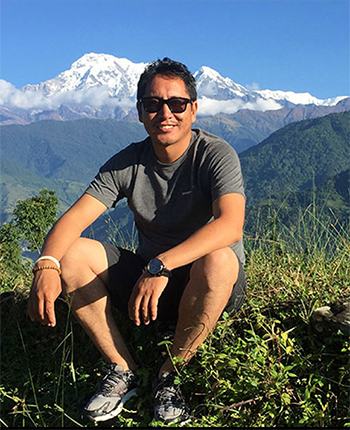



 Trip HIghlights
Trip HIghlights
 Detailed Itinerary
Detailed Itinerary
 Inclusions & Details
Inclusions & Details
 Date & Price
Date & Price
 Trip Review
Trip Review
 Faqs
Faqs
 Travel Videos
Travel Videos
